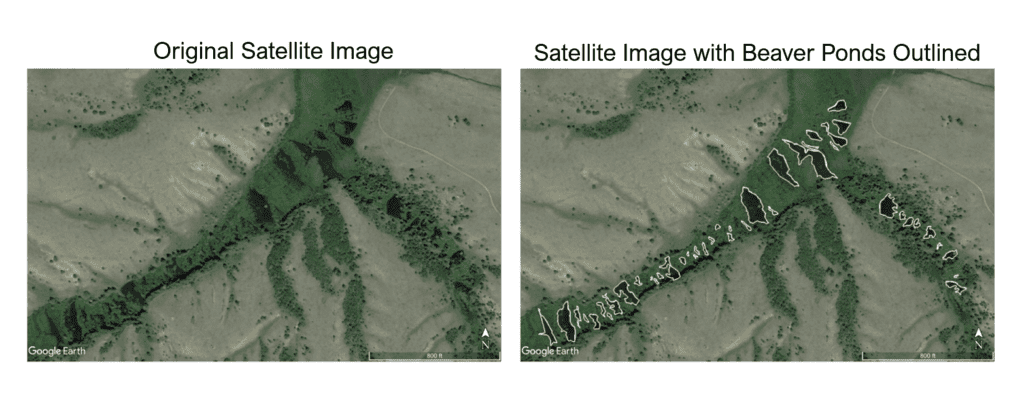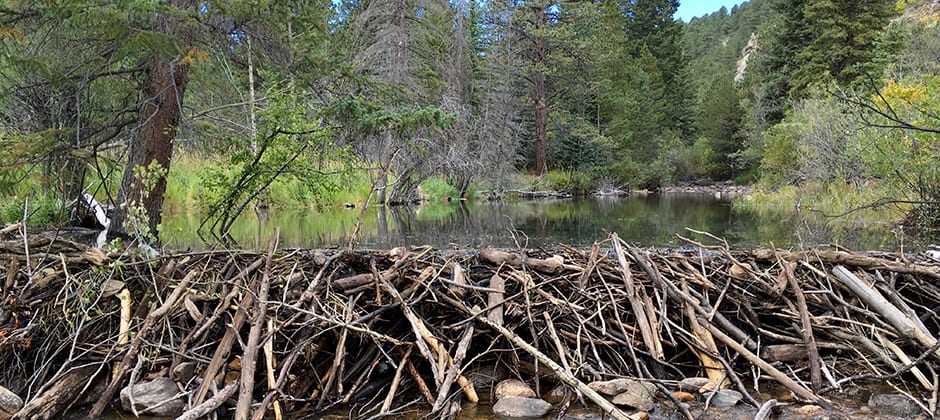Share this article
Beavers create fire-resistant forest patches
They chew down trees, dam up waterways and build wetland ecosystems that benefit a host of other species. Now, new research shows that beavers’ ecosystem engineering might have another benefit — it could build resilience to wildfire flames.
Burning areas where beavers built their dams is “like trying to light a big old soggy sponge on fire,” said Emily Fairfax, an assistant professor at the California State University Channel Islands and the first author of a study published recently in Ecological Applications.
Fairfax had previously worked with beavers (Castor canadensis) and noticed that the areas they dammed stayed green even in the midst of drought. Then, she saw a photo posted by fluvial geomorphologist Joe Wheaton after a forest fire that showed an island of green surrounded by burnt trees. She decided to look more closely at whether the beavers’ wetlands engineering created some fire resilience.
She and co-author Andrew Whittle examined satellite images of areas that had experienced five major fires. The oldest wildfire they studied burned in 2000 in Sequoia National Forest in California. The rest occurred between 2013 and 2018 in Oregon, Colorado, Idaho and Wyoming. In the areas that these fires burned, the researchers identified a total of 1,500 beaver dams.
The team found that the fires didn’t burn too intensely in areas near beaver dams — they burned on average three times less than areas without beavers.
“These areas stayed green,” Fairfax said.

A satellite photo shows a beaver pond area. The ponds themselves are outlined on the right. Credit: Google Earth/Emily Fairfax
Beyond the dams themselves, beavers make other changes to the surrounding area by building channels and spreading water around. Their work contributes to more water storage on the landscape — it even helps recharge aquifers.
“They’ve made these huge patches of basically wet leaves on the landscape,” Fairfax said.
While the beavers don’t stop fires altogether, Fairfax said, “they are protecting the areas most important to them.”
One of the take-away messages, she said, is that beavers may be able to build fire resilience just as well as landscape managers. As a result, managers may be able to place beavers strategically on the landscape to build fire resilience and protect human infrastructure.
“They’re a keystone species — they’ve been damming for tens of thousands of years,” Fairfax said. “They’ve been building dams longer than people have been building dams, so I trust what they’re doing at this point.”
In areas where people actively remove beavers due to perceived negative impacts on the landscape, Fairfax said, if they’re not putting infrastructure at risk, it might be a good idea to leave them in place.
“I think it’s good to let beavers be beavers,” she said.
Header Image: Beaver dams can create fire resilience. Credit: Emily Fairfax








